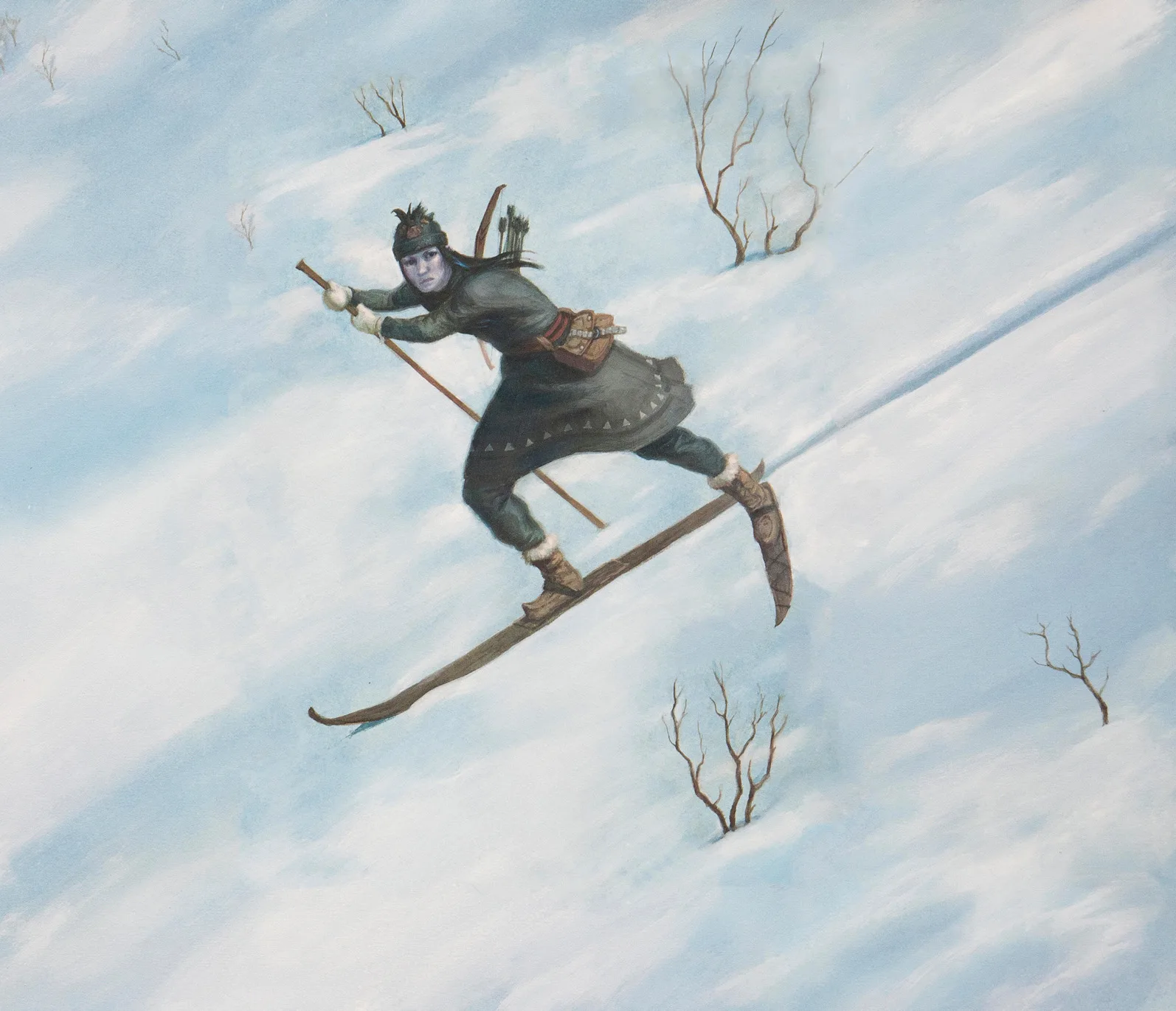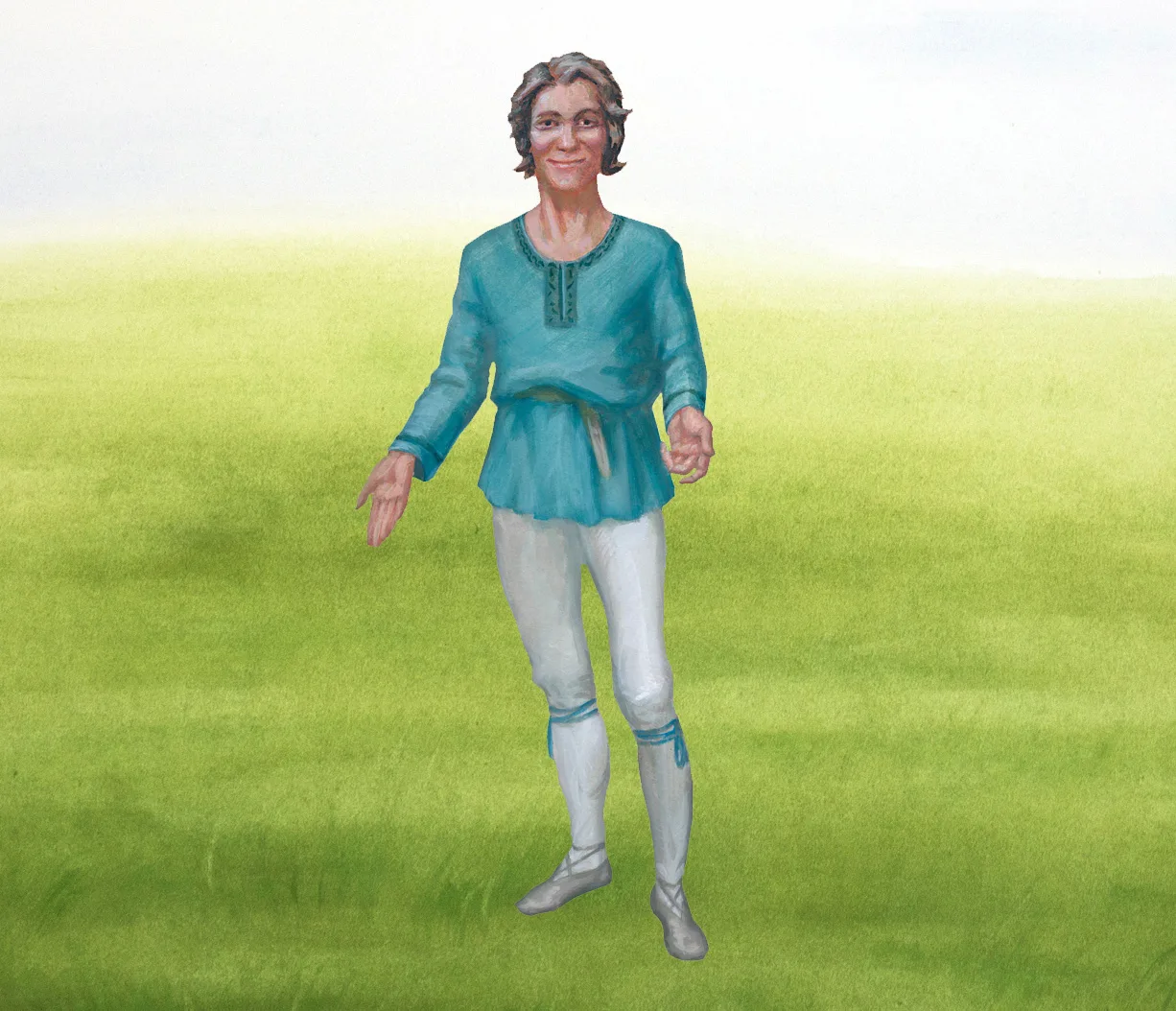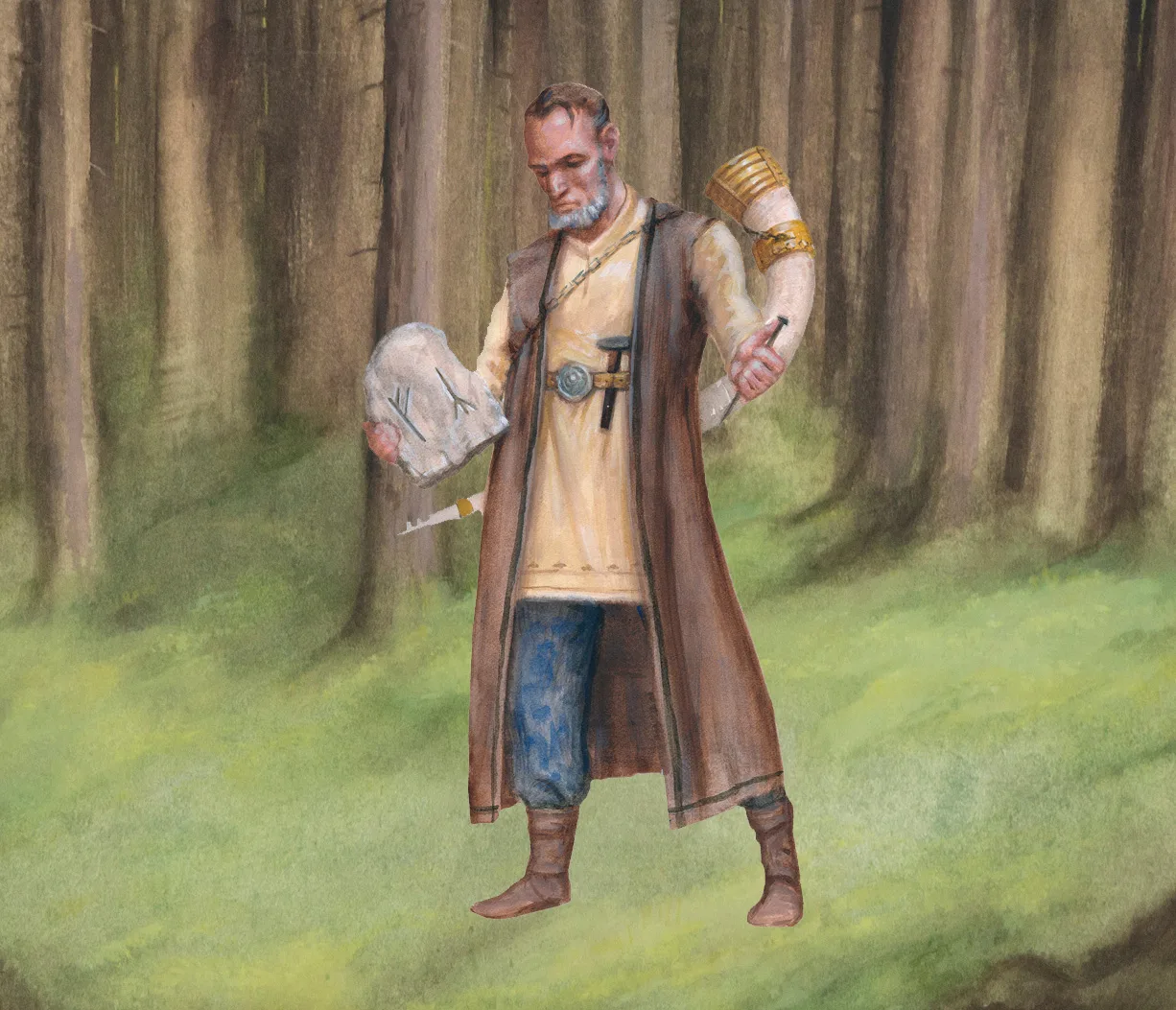Freyja – goddess of fertility and war
Iron Age
500 BC – AD 1100
Viking Age
AD 800 – AD 1100
Middle Ages
AD 1050 – AD 1520
Freyja often carries a staff, a sign of her mastery of seiðr, a form of magic through which one can see into the future. It is Freyja who teaches Odin, foremost of the Æsir, how to practise seiðr and the art of divination.
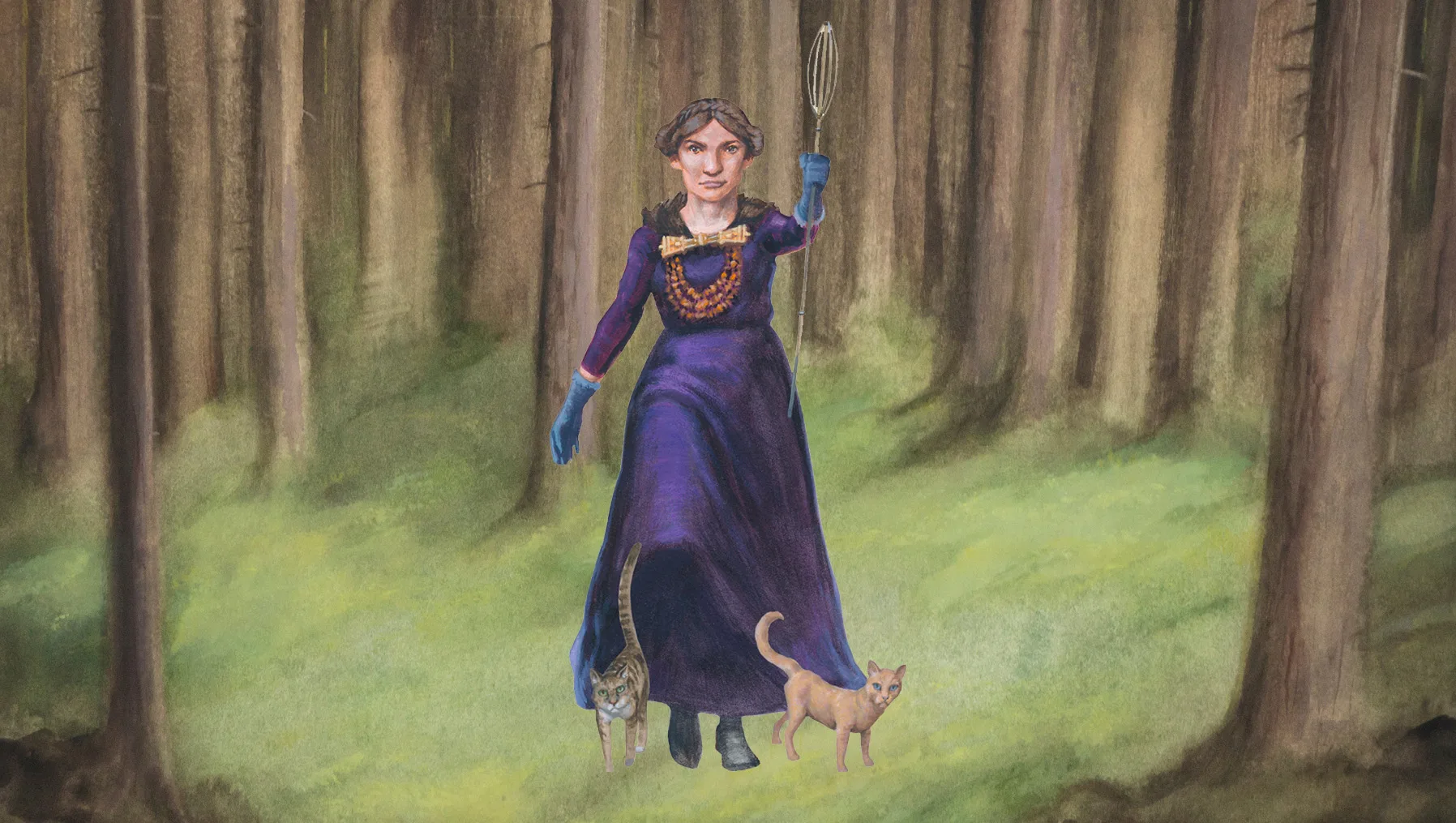
When Freyja travels, she does so in a chariot drawn by two great cats – an unusual and powerful entourage that reflects her unique nature.
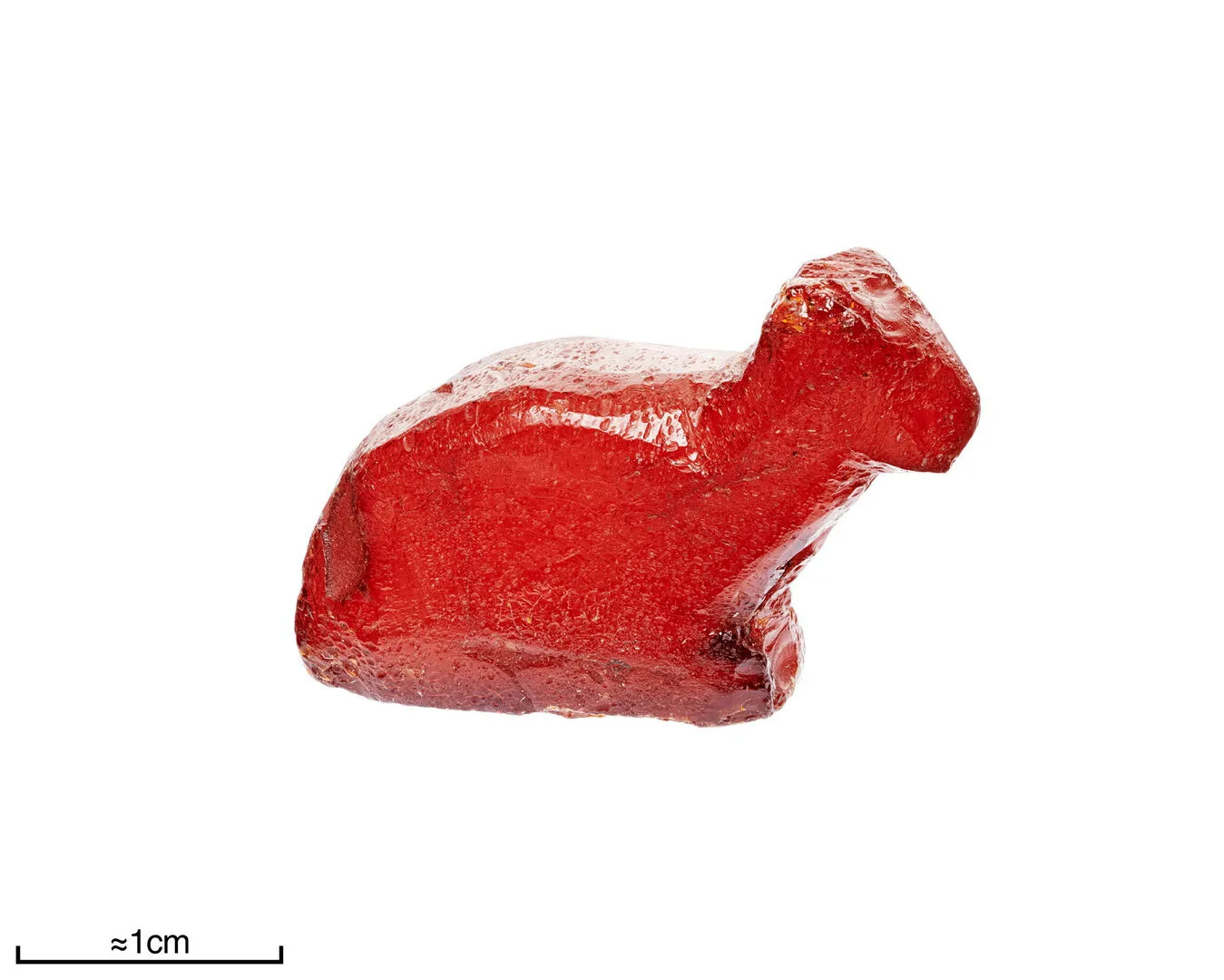
Cat figurine
Amber figurine from the Viking Age depicting a crouching cat.
But Freyja also has a darker and more warlike side. As a goddess of battle, she receives half of the slain warriors into her hall, Fólkvangr, while the other half go to Odin in Valhalla.
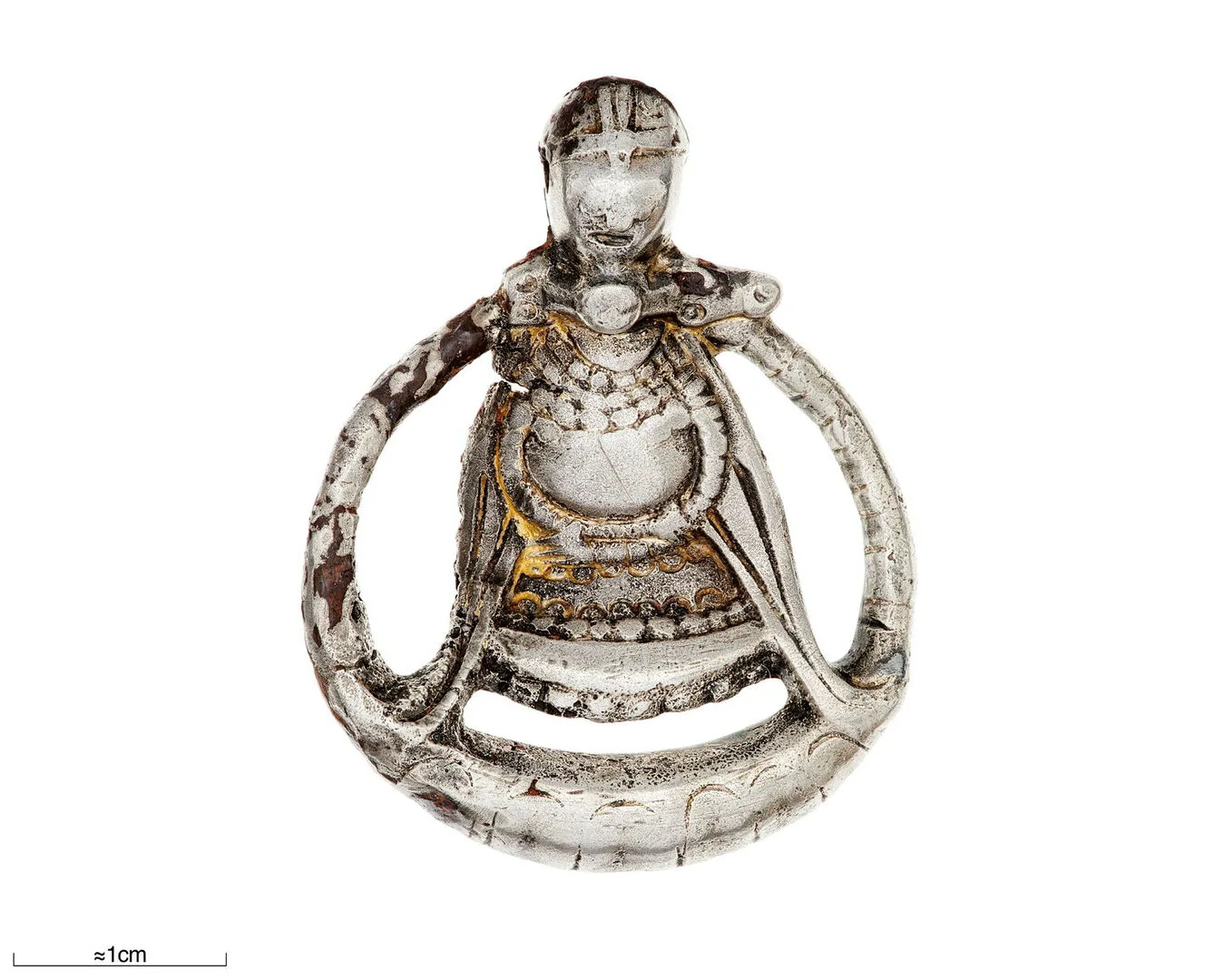
Pendant
Viking Age silver pendant thought to depict Freyja.
The world’s most beautiful jewel
Freyja wore a jewel called Brísingamen. It was the most beautiful necklace in the world and greatly coveted. According to the myth, Freyja was Odin’s lover. She lived in a splendid and well-guarded house, into which no one could enter without her leave.
One day Freyja saw four dwarfs forging a wondrous necklace inside a stone. She wished to buy it and offered gold and silver. But the dwarfs desired something else. They proposed that she should lie with each of them for one night in exchange for the jewel.
Freyja agreed to the bargain. After four nights she received the necklace and went home. She told no one what had happened.
Loki steals the necklace
Loki, who was ever a troublemaker, discovered how Freyja had obtained Brísingamen. He told Odin, who wished to possess the necklace and asked Loki to fetch it. But Freyja’s house was locked. To get inside, Loki turned himself into a fly. He flew around the house, searching for a crack.
At last he found a small hole beneath the roof and crawled in. Freyja was asleep, wearing the necklace. Loki saw that the clasp was at her neck. He changed into a flea, bit her on the cheek, and waited until she turned in her sleep. Then he undid the clasp, took the necklace, and left the house without waking her.
Freyja uses her magic
When Freyja awoke, she saw that the necklace was gone and the door stood open. She understood what had happened and went to Odin to demand it back.
Odin agreed to return the jewel, but only if Freyja first used her magic. He required her to cast a spell upon two mighty kings, forcing them to fight each other in an eternal battle.
Freyja’s struggle to regain the necklace reminds us that power and magic are often bound up with responsibility and hard choices, and that even a mighty goddess must yield to the forces that govern the world.
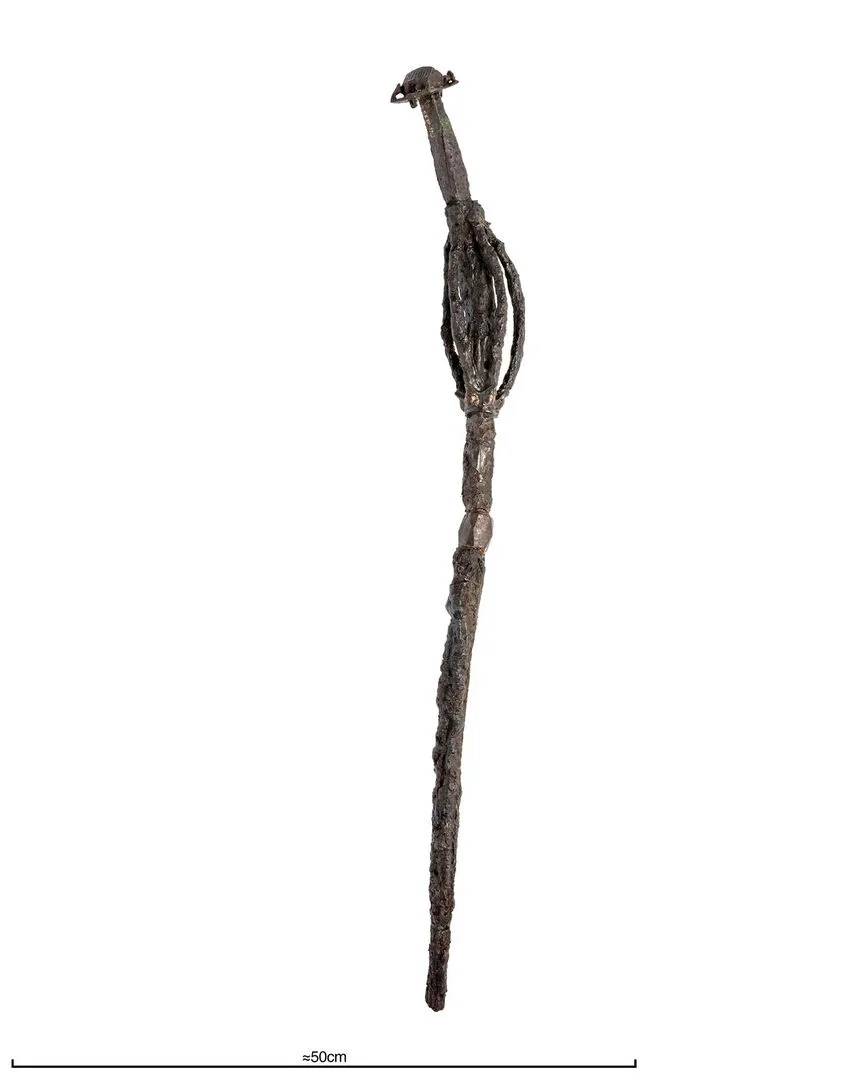
Vǫlva Staff
Iron staff found in a grave from the Viking Age. Staffs like this are interpreted as seeresses' staffs.
Facts about Freyja:
- Name: Freyja (also spelt Freja, Freyia)
- Parents: Njord (father) – her mother’s name is not mentioned in the sources
- Siblings: Freyr (brother)
- Qualities: Loving, powerful, independent, sensual, magical
- Symbolism: Love, fertility, beauty, seiðr (Old Norse magic)
- Resides: Fólkvangr (half of slain warriors go here, the other half to Valhalla, Odin’s hall)




